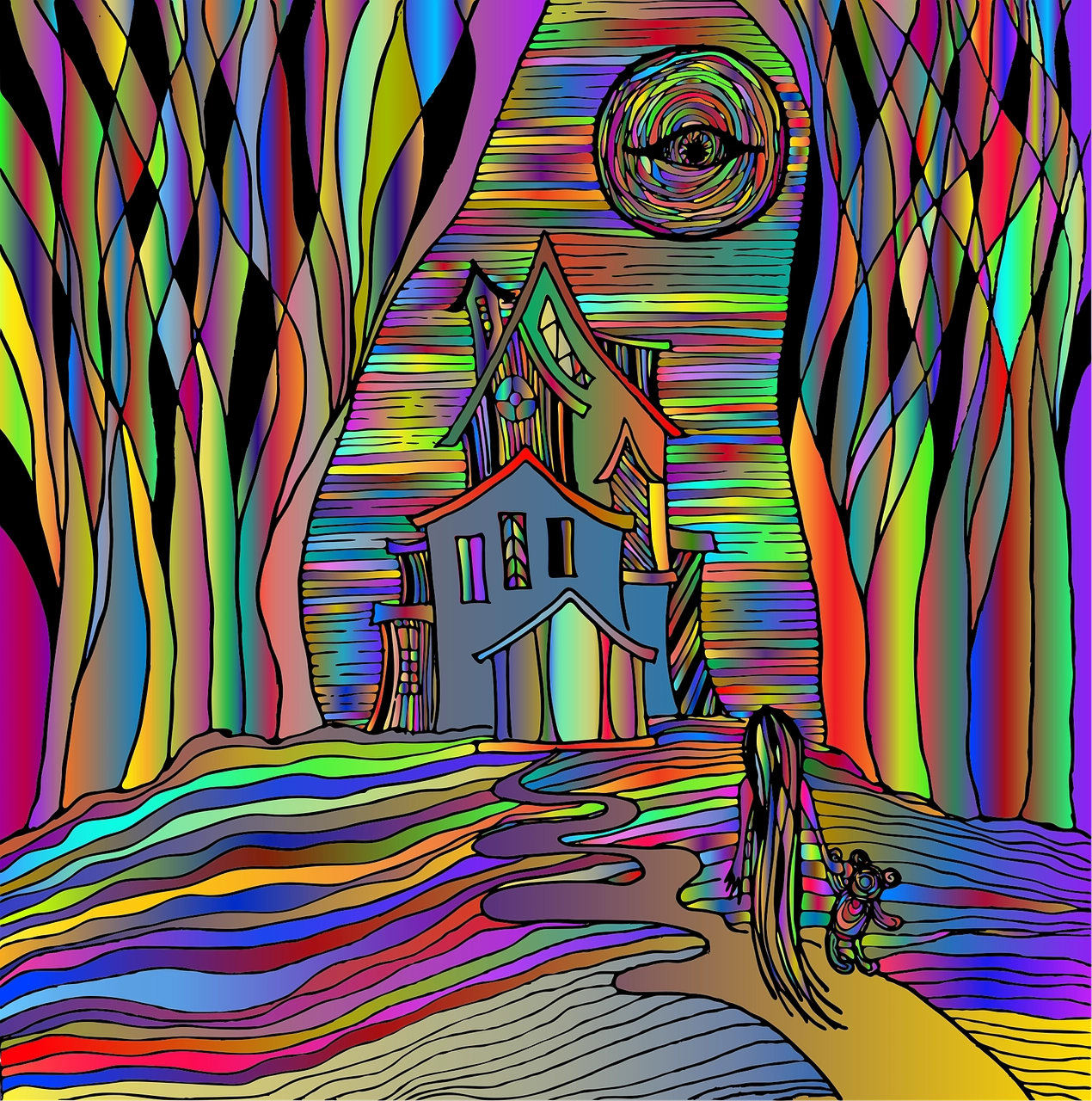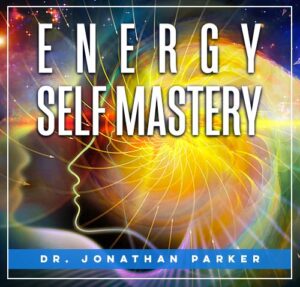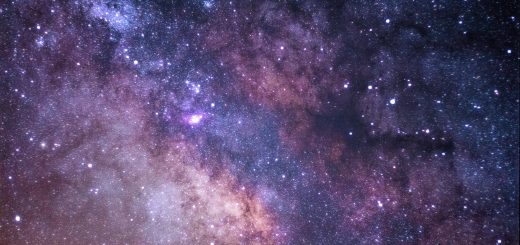How the Mayans understood energy and time

Looking for more amazing products? Check out our online store and explore our collection here! Happy shopping!
Before diving in, please note: This post is for informational purposes only. If you’d like to know more about how we approach topics, feel free to check out our friendly Disclaimer Page.
Hey there, amazing readers! 
We’re committed to delivering quality posts, and your support (even just sticking around despite the ads) means everything to us. So, bear with us, and thanks for helping us keep the good vibes rolling. Now, on to the fun stuff!
TRANSLATE BUTTON AT THE END OF THE ARTICLE
A Quick Overview
The Mayans were not just skilled architects or farmers; they were also profound thinkers with a deep understanding of energy and time.
This ancient civilization left behind a legacy that intertwines their views on these two critical concepts.
Their insights resonate even today, shedding light on how we interact with the natural world and the cyclical nature of existence.
Join me as we dive into the captivating way the Mayans perceived energy and time, revealing layers of wisdom that might inspire us in our modern lives.
Unraveling the Mysteries of Mayan Energy Concepts
The Mayans possessed a dynamic understanding of energy.
They saw it as a vital force flowing through everything, from the smallest grain of corn to the grandest temple.
Energy was not simply something to be harnessed; it was intricately woven into the fabric of their existence.
They believed that everything has a life force, or k’uh, which is crucial to their worldview.
The concept of duality played a significant role in how they perceived energy.
They understood that opposing forces, like light and dark, male and female, and life and death, coexist.
This balance was essential in their rituals and daily practices.
They knew that harmony was vital for both individual and societal well-being.
The Mayans also believed in the energy of the earth.
They viewed mountains, rivers, and the very soil as living beings, each contributing to the cycle of life.
This respect for nature’s energy fostered a deep-rooted sense of responsibility.
They recognized that energy could be both constructive and destructive, depending on how it was engaged.
Energy for the Mayans wasn’t just a scientific principle; it was spiritual.
They often sought to align their energies with the cosmos.
This connection involved meditative practices, rituals, and offerings, which helped them maintain a harmonious relationship with their environment.
In their society, energy was not only individual but collective.
They understood that the energies of their communities, families, and even architecture influenced the overall spirit of their civilization.
This communal approach to understanding energy underscores the importance they placed on social bonds and collective responsibility.
The Intricate Connection Between Energy and Time
Time for the Mayans was far from linear; they viewed it as cyclical.
This perception of time connected beautifully with their understanding of energy.
They recognized that just as energy flows and transforms, time too moves in cycles.
The patterns of the past, present, and future were all interlinked.
The Mayans divided time into various cycles, each with its own significance.
Major cycles, like the baktun, spanned thousands of years, while shorter cycles, like the tun, marked years and months.
This segmentation helped them track the rhythm of energy in their lives and the world around them.
Master your Energy and Awaken Your Spirit – start your journey here.
Their calendars were not just tools for marking days; they were reflections of energy flows.
Each day was thought to possess a unique energy, and specific rituals were associated with different days.
By understanding these energies, the Mayans could navigate their activities, ensuring they aligned with the universe’s rhythms.
Moreover, they believed that certain historical events could repeat over time.
This concept of recurrence meant that history was not lost but would come back around in new forms.
The cyclical nature of time allowed them to draw lessons from the past, guiding their future actions.
The connection between energy and time can also be seen in their agricultural practices.
They timed their planting and harvesting according to the solar and lunar cycles, ensuring that they harnessed the earth’s energy at its peak.
Farmers would often consult the calendar to identify the best days for sowing seeds or conducting rituals for a bountiful harvest.
Mayan Cosmology: A Unique Perspective on the Universe
Mayan cosmology provides a wealth of knowledge about how they understood the universe.
At its core, it embodies their beliefs in the interconnectedness of all things.
The cosmos was seen as a vast entity filled with energies and spiritual beings.
Central to their cosmology was the concept of the World Tree, or Yaxche.
This celestial tree connected the heavens, earth, and the underworld, symbolizing the flow of energy between different realms.
The branches reached high into the sky, while the roots delved deep into the earth.
This representation illustrated how energy moves through various dimensions.
The Mayans also observed celestial movements, such as the sun, moon, and stars.
They understood that these bodies influenced the energy on earth.
The changing positions of celestial bodies were celebrated and studied, as they held the keys to understanding time and energy.
The four cardinal directions were significant in Mayan cosmology.
Each direction was associated with different energies, colors, and deities.
They utilized this knowledge in rituals, ensuring that their actions resonated with the energies emanating from each direction.
Rituals often involved invoking the deities associated with the sun and rain, as these celestial phenomena were vital for their agricultural societies.
The interplay between human activities and celestial energies highlighted their belief in mutual dependence.
The concept of duality also permeated their cosmology.
The Mayans recognized that creation and destruction were part of a larger cycle.
This understanding allowed them to embrace change rather than fear it, fostering a sense of resilience and adaptability.
Understanding the Mayan Calendar: A Timekeeping Marvel
The Mayan calendar is one of the most intricate and fascinating timekeeping systems ever devised.
It consists of several interlocking cycles, each serving a different purpose.
The most well-known are the Tzolk’in and the Haab calendars, which operate in tandem.
The Tzolk’in is a 260-day calendar made up of 13 cycles of 20 named days.
Each day has its own unique energy and significance.
Mayans believed that the energies of these days influenced personal traits and events.
People would often consult the Tzolk’in for guidance in significant life decisions.
The Haab is a 365-day solar calendar that includes 18 months of 20 days each, plus an additional short month.
This calendar was instrumental for agricultural planning, as it aligned with the solar year.
The combination of the Tzolk’in and Haab created a 52-year cycle known as the Calendar Round, during which every day name and number combination recurred.
These calendars were not static but reflected the Mayans’ understanding of time as fluid and dynamic.
They believed that the energies of specific time periods could guide their actions and decisions.
This wisdom allowed them to adapt to changing circumstances in their environment.
The calendar also played a role in their religious ceremonies.
Important rituals were often tied to specific days on the calendar, ensuring that they aligned with the cosmic energies.
This connection to time and energy was crucial for ensuring harmony in their lives.
The Mayans were keen astronomers.
They meticulously recorded celestial events like eclipses and solstices, linking them to their calendar systems.
Their observations informed agricultural practices and social events, illustrating the unity of time and energy in their worldview.
Energy Flow: How the Mayans Viewed Natural Forces
The Mayans were keen observers of the natural world, and they paid close attention to the flow of energy within it.
They understood that everything in nature had a rhythm and energy pattern.
This observation shaped their agricultural practices, architecture, and societal structure.
Master your Energy and Awaken Your Spirit – start your journey here.
Water, for instance, was seen as a powerful energy source.
The Mayans constructed sophisticated irrigation systems that allowed them to harness and manage water flow effectively.
They recognized that water was essential for crops and life itself, making it a focal point in their environmental understanding.
The landscape also played a crucial role in their energy awareness.
Mayan cities were often built near mountains, rivers, or other natural features believed to enhance energy flow.
They thought these geographical elements amplified spiritual and physical energies, creating harmonious living spaces.
The concept of energy flow extended to their beliefs about the human body.
They viewed physical health as a manifestation of balanced energy.
Illness was often seen as a disruption in energy flow, leading to various healing practices aimed at restoring balance.
They also recognized the energy of the seasons.
Each season had its unique characteristics and energies, influencing agricultural cycles and daily life.
By aligning their activities with seasonal changes, the Mayans ensured they were in sync with nature.
Rituals often involved invoking natural forces, like wind and rain, to influence energy flow.
They believed that prayer and offerings could enhance natural energy patterns, fostering a symbiotic relationship with their environment.
Rituals and Their Role in Harnessing Energy
Rituals were central to Mayan life, serving as a means to harness and direct energy.
These ceremonies were not just cultural expressions; they were profound acts designed to align human energy with cosmic forces.
Rituals often included offerings, music, and dance, all of which were believed to channel energy.
For example, ceremonies to honor the rain god Chaac were integral to agricultural success.
Mayans would offer food, flowers, and even animals to ensure a bountiful harvest, reflecting their belief in reciprocity with nature.
Each ritual was meticulously planned, often aligning with specific days on their calendar.
This connection ensured that the energy of the day complemented the energy of the ritual, enhancing its effectiveness.
By understanding the energies at play, they crafted rituals that resonated powerfully within their cultural context.
The use of symbols and sacred objects was also significant.
The Mayans imbued their rituals with meaning through symbolic representations, from jade to obsidian.
These materials were believed to carry unique energetic properties, amplifying the ritual’s impact.
Community involvement was essential in these rituals.
They drew people together, fostering unity and shared purpose.
The collective energy generated during these ceremonies created a powerful force, reinforcing social bonds and cultural identity.
The rituals allowed the Mayans to honor their ancestors and connect with their spiritual beliefs.
This lineage of energy connections fostered continuity, linking past, present, and future, much like their understanding of time.
The Influence of Celestial Bodies on Mayan Beliefs
For the Mayans, celestial bodies were more than just points of light in the sky.
They were fundamental to their understanding of energy and time.
The sun, moon, and planets held significant meaning, influencing their daily lives and spiritual practices.
The sun was revered as a source of life and energy.
Its cycles determined agricultural activities, guiding when to plant and harvest.
The winter solstice, when the sun reaches its lowest point, was a pivotal time for the Mayans, marking a rebirth of light.
The moon was associated with feminine energy and cycles.
Its phases affected tides, planting schedules, and even human emotions.
The Mayans recognized the moon’s influence on natural rhythms, celebrating its cycles through rituals and festivals.
Planetary alignments were also important.
The movements of Venus, for example, were closely monitored and linked to warfare and other societal events.
The Mayans recognized that these celestial patterns were not random but part of a larger cosmic order, influencing the energies present at any given time.
Eclipses were seen as powerful omens.
They believed that these events indicated shifts in energy, often prompting significant societal changes or rituals to realign with cosmic forces.
The Mayans viewed eclipses as moments of both danger and opportunity, further underscoring their connection to celestial energies.
Their architecture often reflected their astronomical beliefs.
Many temples were aligned with celestial events, ensuring that the energy from these occurrences could be harnessed during rituals.
This architectural synchronicity illustrated their understanding of the relationship between earthly and cosmic energies.
The Concept of Cycles: Time as a Repeating Energy
Cycles were at the heart of Mayan understanding of time and energy.
They viewed existence as a series of interconnected cycles, each influencing the next.
This perspective allowed them to embrace change as an essential aspect of life.
The concept of k’atun, a period of 20 years, was significant.
Every k’atun represented a complete cycle, and the completion of one was cause for celebration.
The renewal of these cycles fostered a sense of continuity, linking generations through shared experiences.
The agricultural cycle was deeply intertwined with their understanding of time.
Seasons dictated the rhythm of life, with planting, harvesting, and rest periods each marking distinct energy phases.
They believed that by living in accordance with these cycles, they could tap into the energies of growth and decay.
Life events, too, were seen as cyclical.
Birth, death, and rebirth formed a continuous loop, reflecting their beliefs in the interconnectedness of all life.
This understanding encouraged a more holistic approach to existence, where every action had repercussions within the larger cycle.
The recurring patterns in nature, such as the changing of the seasons or the phases of the moon, reinforced their belief in cycles.
These observations helped them develop an intimate relationship with their environment, allowing them to adapt and thrive.
Their rituals often acknowledged these cycles, celebrating transitions from one phase to another.
Whether it was a harvest festival or a ceremony marking the new year, these events were designed to honor the cycles of energy that permeated their lives.
Architecture: Energy and Time Reflected in Structures
Mayan architecture serves as a testament to their profound understanding of energy and time.
Their cities were designed with purpose, reflecting both functional needs and spiritual beliefs.
Temples and pyramids were often built to align with celestial events.
For example, the Temple of Kukulcán in Chichen Itza is famous for its equinox phenomena.
On specific days, the shadows cast by the pyramid create the illusion of a serpent descending the steps, symbolizing the connection between earth and sky.
The layout of cities also showcased their understanding of energy flow.
Streets were often oriented to capture prevailing winds, while water features were strategically placed to harness the earth’s energies.
This architectural intelligence ensured that the cities were not only functional but also spiritually resonant.
Materials used in construction were chosen for their energetic properties.
Stones like limestone and jade were believed to carry specific energies that could enhance the vibrancy of the space.
This thoughtful selection reflected their belief in the importance of creating harmonious environments.
Public spaces were designed to foster community interaction, reinforcing social energy.
Gathering places allowed for collective rituals and celebrations, embodying the Mayans’ understanding of energy as a communal force.
Homes were built with consideration for family and community dynamics.
The arrangement of spaces encouraged interaction, reflecting their belief in the importance of social bonds for personal energy.
Even burial sites were meticulously planned.
Tombs often aligned with celestial bodies, ensuring a connection between the deceased and the cosmos.
This practice illustrates their view of death as a transition rather than an end, emphasizing the continuity of energy.
Mayan Myths: Stories That Connect Energy and Time
Mayan mythology is rich with stories that illustrate their beliefs about energy and time.
These tales often feature gods and heroes navigating the cycles of life, reflecting the interconnectedness of all existence.
One prominent myth involves the Hero Twins, Hunahpú and Xbalanqué.
Their journey through the underworld symbolizes death, rebirth, and the cyclical nature of life.
They faced challenges that tested their abilities, ultimately emerging victorious, a metaphor for overcoming obstacles and embracing change.
Another example is the creation myth of the Popol Vuh, which recounts how gods shaped the world and humanity.
The narrative emphasizes the relationship between divine energy and earthly existence, showcasing how the Mayans understood their place in the cosmos.
These myths often encapsulated moral lessons, teaching the importance of balance and harmony with nature.
They served as reminders of the cycles of life, encouraging respect for the energies present in all things.
Rituals based on these myths reinforced their teachings, allowing people to connect with the energy of the stories.
By participating in ceremonies, the Mayans honored their deities and the lessons embedded in their myths, fostering a sense of belonging and continuity.
The oral tradition played a crucial role in preserving these stories.
As they were passed down through generations, they adapted to reflect the changing times while retaining their core messages about energy and time.
The symbolism in these myths often mirrored the natural world.
Elements like water, earth, and celestial bodies were woven into the narratives, reinforcing the Mayans’ connection to the universe and its energies.
Lessons from the Mayans: A Harmonious Existence
The insights of the Mayans concerning energy and time offer valuable lessons for today.
Their understanding of the interconnectedness of all things is particularly relevant in our fast-paced, fragmented world.
By recognizing the energy flows around us, we can foster a sense of harmony in our lives.
Living in tune with natural cycles can enhance our well-being.
Just as the Mayans aligned their agricultural practices with seasonal changes, we can find balance by respecting the rhythms of nature in our own lives.
This might involve taking breaks when the seasons shift or reflecting on personal cycles of growth.
Community is another vital lesson.
The Mayans understood that collective energy creates strength.
By fostering connections with others, we can create supportive networks that enhance our individual energies, much like the Mayans did through their communal rituals.
Rituals can also play a significant role in our lives.
Engaging in regular practices that honor our connections to nature, community, and ourselves can help us maintain balance.
Whether it’s a daily meditation, a family gathering, or simply spending time outdoors, these rituals can ground us in the present.
Embracing change is essential.
The Mayans viewed cycles as opportunities for renewal, not endings.
By adopting a mindset that welcomes transformation, we can navigate life’s challenges with grace and resilience.
Lastly, we can all benefit from a deeper understanding of the energies that influence us.
This awareness can inform our decisions and actions, leading to a more harmonious existence.
By embracing the teachings of the Mayans, we can cultivate a life that resonates with the energies around us.
Embracing Mayan Wisdom in Today’s World of Energy
Incorporating Mayan wisdom into our modern lives can be empowering.
By reflecting on how we engage with energy and time, we can create a more balanced existence.
One way to do this is by practicing mindfulness.
The Mayans recognized the importance of being present, and taking time to slow down can enhance our awareness of the energy around us.
This can be as simple as enjoying a quiet moment with nature or practicing gratitude for the energies we often take for granted.
Understanding the cycles in our lives can also provide clarity.
Are there patterns in your life that repeat?
Recognizing these cycles can help us make informed choices, whether in personal relationships or career paths.
We can also honor the natural world by being mindful consumers.
The Mayans respected their environment, understanding that the earth’s energy sustains life.
Adopting sustainable practices in our daily lives can help us create a positive impact, mirroring the Mayans’ reverence for nature.
Building community ties is crucial.
Just as the Mayans thrived through collective energy, fostering connections with those around us can create a network of support.
Engaging in local initiatives or simply reaching out to neighbors can reinforce our sense of belonging.
Lastly, let’s not forget the power of storytelling.
By sharing our experiences and lessons learned, we can connect with others and honor the wisdom embedded in our own narratives.
Just as the Mayans passed down their myths, we can carry forward our insights to inspire future generations.
Conclusion
The Mayans had a profound understanding of energy and time, which shaped their civilization in countless ways.
From their intricate calendars to their rituals and cosmology, they embodied a holistic approach to existence.
In a world that often feels disconnected, we can draw inspiration from their wisdom.
By embracing cycles, nurturing community, and respecting the energies around us, we can cultivate a more harmonious life.
So, let’s take a page from the Mayan playbook and reconnect with the energies that shape our world.
Who knows what wisdom we might discover along the way?

The Enlightenment Journey is a remarkable collection of writings authored by a distinguished group of experts in the fields of spirituality, new age, and esoteric knowledge.
This anthology features a diverse assembly of well-experienced authors who bring their profound insights and credible perspectives to the forefront.
Each contributor possesses a wealth of knowledge and wisdom, making them authorities in their respective domains.
Together, they offer readers a transformative journey into the realms of spiritual growth, self-discovery, and esoteric enlightenment.
The Enlightenment Journey is a testament to the collective expertise of these luminaries, providing readers with a rich tapestry of ideas and information to illuminate their spiritual path.
Our Diverse Expertise
While our primary focus is on spirituality and esotericism, we are equally passionate about exploring a wide range of other topics and niches 

To ensure we provide the most accurate and valuable insights, we collaborate with trusted experts in their respective domains 
Our blog originally focused on spirituality and metaphysics, but we’ve since expanded to cover a wide range of niches. Don’t worry—we continue to publish a lot of articles on spirituality! Frequently visit our blog to explore our diverse content and stay tuned for more insightful reads.
Hey there, amazing reader! 
Check out our store here and take a peek at some of our featured products below! Thanks for being awesome!














